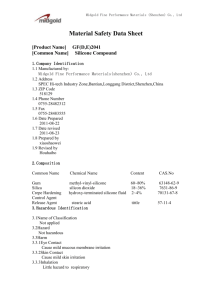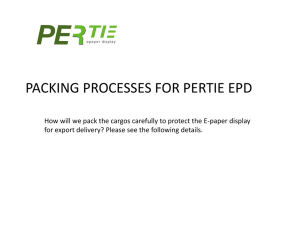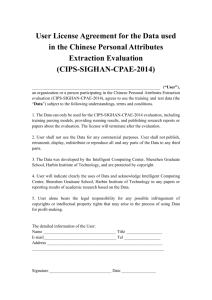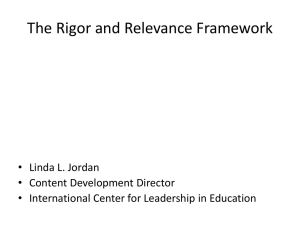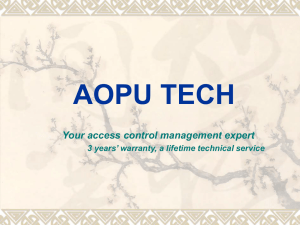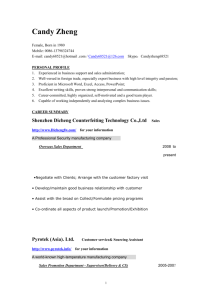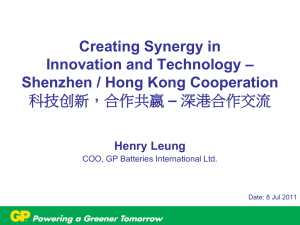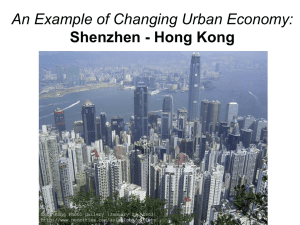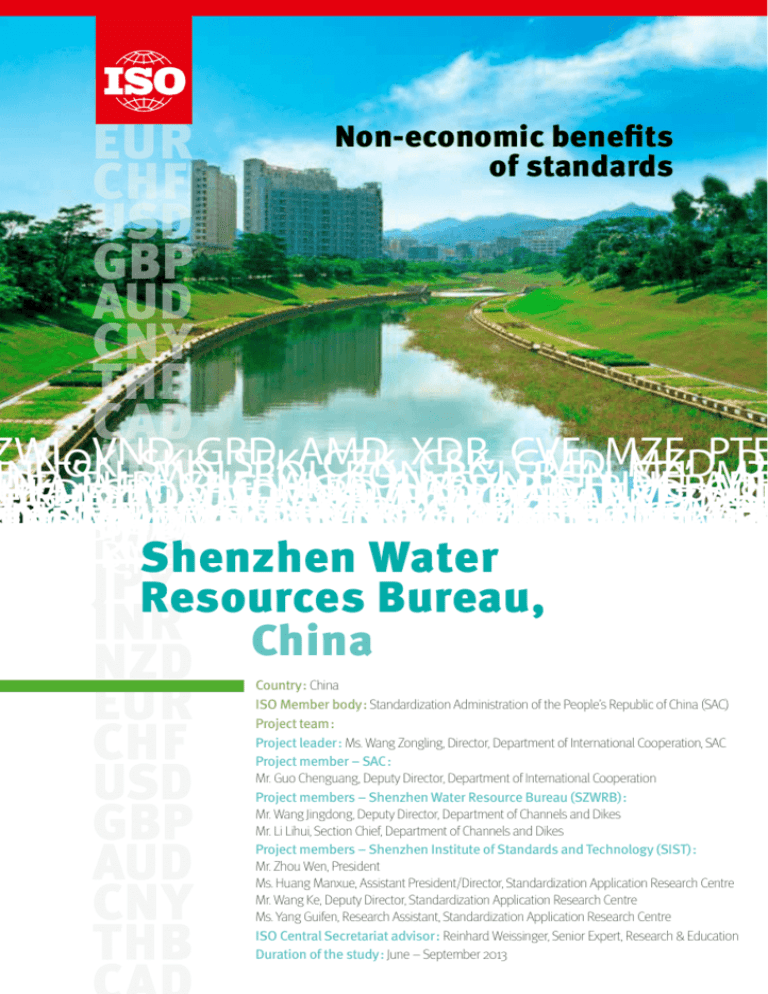
Non-economic benefits
EUR
of standards
CHF
USD
GBP
AUD
CNY
THB
CAD
ZWL,
VND,
GRD,
AMD,
XDR,
CVE,
MZE,
PTE
NOK,
SKK,
SEK,
CZK,
CSK,
GMD,
MKD,
DZ
ARS
HNL,
SLL,
MDL,
ROL,
RON,
BGL,
BGN,
SZL,
MT
TPE,
EUR,
CHE,
ANG,
AWG,
NLG,
HUF,
ADF
AFA,
AFN,
XAG,
MGA,
THB,
PAB,
ETB,
VEB,
VEF
HKD,
SBD,
JMD,
BBD,
LRD,
NAD,
NZD,
SGD
BHD,
IQD,
JOD,
KWD,
LYD,
RSD,
CSD,
SD
OA,
AOK,
AON,
AOR,
MMK,
GEL,
LVL,
ALL
TG,
PYG,
UAH,
PGK,
LAK,
HRK,
MWK,
ZMK,
BRL
TL,
SML,
VAL,
LTL,
CYP,
EGP,
FKP,
GIP,
IEP,
LBP
HP,
SDP,
SDG,
SYP,
TRL,
TRY,
GBP,
LSL,
AZM
ZN,
TMM,
TMT,
DEM,
BAM,
FIM,
MZM,
MZN
TND,
YUD,
YUM,
AED,
MAD,
STD,
AUD,
BSD
BOB,
GHC,
CRC,
SVC,
NIC,
NIO,
DKK,
EEK,ZWR
ISK
BOV,
NGN,
BTN,
XAU,
MRO,
TOP,
XPD,
MO
SRD,
TWD,
TTD,
USD,
USS,
USN,
ZWD,
BEF, ERN,
BIF,
KMF,
CDF,
DJF,
FRF,
GNF,
LUF,
MGF
RUB
BZD,
BND, XAF,
KYD,
CAD,XFO,
XCD,XFU,
FJD, CHW
GYD
Shenzhen
Water
RWF, BMD,
CHF,
XOF,
XPF,
JPY
Resources Bureau,
INR China
NZD
EUR
CHF
USD
GBP
AUD
CNY
THB
Country : China
ISO Member body :Standardization Administration of the People’s Republic of China (SAC)
Project team :
Project leader : Ms. Wang Zongling, Director, Department of International Cooperation, SAC
Project member – SAC :
Mr. Guo Chenguang, Deputy Director, Department of International Cooperation
Project members – Shenzhen Water Resource Bureau (SZWRB) :
Mr. Wang Jingdong, Deputy Director, Department of Channels and Dikes
Mr. Li Lihui, Section Chief, Department of Channels and Dikes
Project members – Shenzhen Institute of Standards and Technology (SIST) :
Mr. Zhou Wen, President
Ms. Huang Manxue, Assistant President/Director, Standardization Application Research Centre
Mr. Wang Ke, Deputy Director, Standardization Application Research Centre
Ms. Yang Guifen, Research Assistant, Standardization Application Research Centre
ISO Central Secretariat advisor :Reinhard Weissinger, Senior Expert, Research & Education
Duration of the study :June – September 2013
International Organization
for Standardization
ISO Central Secretariat
1, chemin de la Voie-Creuse
Case postale 56
CH - 1211 Genève 20
Switzerland
www.iso.org
© ISO, 2014
All rights reserved
ISBN 978-92-67-10624-3
Table of contents
1 Objective and organization of the case study ..................................................................................3
1.1Objective ......................................................................................................................................................................................................3
1.2 Timeline of the case study project ....................................................................................................................................3
1.3 River management industry ...................................................................................................................................................3
1.4Methodology ...........................................................................................................................................................................................4
2 Introduction to the selected organization .........................................................................................
3 Attitude of the organization towards standardization 4 Analysis of the value chain ............................................................
...........................................................................................................................
6
8
11
4.1 Industry value chain ................................................................................................................................................................... 11
4.2 River management value chain ...................................................................................................................................... 12
4.3 Key value drivers ............................................................................................................................................................................. 13
5 Scope of the case study ...................................................................................................................................
6 Standards used in the river management value chain ........................................................
14
.......
16
.........................................................................................................................................
17
7 Definition of operational indicators to measure the impacts of standards 8 Impacts of standards 14
9 Approach in the assessment and the quantification of the results ...........................
18
9.1 Conduction of a questionnaire survey .....................................................................................................................18
9.2 Use of the Contingent Valuation Method (CVM) ..........................................................................................18
10 Calculation of the non-economic benefits of standards .....................................................
20
10.1 Job creation ......................................................................................................................................................................................... 20
10.2Water quality ..................................................................................................................................................................................... 20
10.3Public awareness ........................................................................................................................................................................... 20
10.4Estimated total environmental benefits of standards ............................................................................ 22
11Conclusions ................................................................................................................................................................25
Annex 1 ............................................................................................................................................................................................
Non-economic benefits of standards
China – Shenzhen Water Resources Bureau
26
1
2
Non-economic benefits of standards
China – Shenzhen Water Resources Bureau
1
Objective and organization of the case study
1.1
Objective
The key objective of this case study is to determine in a quantitative
manner the non-economic benefits that companies/organizations can
derive from the use of standards in their business. Such knowledge is
useful for demonstrating the advantages of participating in standards
development initiatives and/or in the use of standards. While many
companies/organizations realize the importance of using standards,
and have analyzed the economic benefits for their business, few have
quantified the non-economic benefits.
1.2
Timeline of the case study project
The case study on non-economic benefits in China was conducted from
June to August 2013 and the report was finalized in September 2013.
Led by the Standardization Administration of the People’s Republic
of China (SAC), the case study was carried out by the Standardization
Application Research Centre of the Shenzhen Institute of Standards
and Technology (SIST), the Shenzhen Water Resource Bureau (SZWRB),
the Shen Shui Water Affair Consulting Co., Ltd., the Shenzhen branch
of the Hunan Hydro & Power Design Institute and with the guidance
of the ISO Central Secretariat.
1.3
River management industry
This study focuses on the non-economic impact of standards on river
management. River management includes the following aspects :
dike slope protection, river cleaning, river dredging, hydrologic
monitoring, water quality monitoring, ecology landscape maintenance, ancillary facility maintenance, emergency relief work, etc. The
Non-economic benefits of standards
China – Shenzhen Water Resources Bureau
3
major standard used in Shenzhen for river management is the local
standard of Shenzhen SZDB/Z 24-2009, Technical Specification for River
Maintenance and Protection, which was developed by the Shenzhen
Water Resource Bureau. The standard was published in November
2009 and implemented in January 2010.
In order to evaluate the benefits of standards in qualitative and
quantitative ways, a self-designed questionnaire was applied to
investigate the degree to which the 200 residents near a river in
Shenzhen which was in the focus of the assessment, were satisfied
with the management of the river, whether they would be willing to
participate in support of river management and whether they would
be willing to pay for river management.
1.4
Methodology
The ISO methodology has been used in assessing and quantifying
the non-economic impacts of standards from the perspective of the
selected organization and the residents near the river. The methodology has been applied in four key steps explained below.
In order to quantify benefits and services derived from functional river
management – a service for which no prices exist in the market – the
Contingent Valuation Method (CVM) was used to quantify the benefits
that result from the use of the key standard SZDB/Z 24-2009. This is
a new approach to quantifying non-economic benefits of standards.
Step 1 : Understand the value chain
Desk research was undertaken on the value chain of river management. The value chain was determined and assessed for the water
works and also for the selected organization.
4
Non-economic benefits of standards
China – Shenzhen Water Resources Bureau
Step 2 : Analyze value drivers
Value drivers are crucial organizational capabilities for the success
of the water works. In this assessment, value drivers specific to the
selected organization are mapped for each segment of the value chain.
In doing so, the value chain, represented by the various key business
functions, is analyzed with the help of key operational indicators.
Step 3 : Identify impact of standards
Following identification of relevant value drivers and key operational
indicators, the relevant standards are described and their impact on
each of the activities of the business functions is mapped through
a series of interviews with the department head of the Shenzhen
Water Resource Bureau.
In order to quantify the impact, an analysis is carried out to examine
whether the social and environmental impact can be measured
after the introduction of standards. The quantification is done on
an annual basis. The impact of the standards, in particular that of
SZDB/Z 24-2009, started with their implementation in 2010, which
amounts to a period of around three years during which steady
improvements could be observed. After this period, the use of the
standards became part of the normal operating procedures in river
management and maintenance in Shenzhen.
Step 4 : Assess and consolidate results
After quantifying the impact of standards, the non-economic impacts
of standards in river management are aggregated. This is done on the
basis of social and environmental effects of the standards applied.
Important qualitative impacts of the standards are also included.
Non-economic benefits of standards
China – Shenzhen Water Resources Bureau
5
2
Introduction to the selected organization
Founded in 1993, the Shenzhen Water Resources Bureau (SZWRB), is
one of the first water resources bureaus established in China and one
of the departments in the administration system of the Shenzhen
government. It is responsible for the development and protection
of water resources, flood control, water supply, water saving, waste
water management, soil and water conservation, clean-up of polluted water, recycled water utilization, sea water utilization and other
activities. It is also responsible for providing guidance concerning
district and street water works and the management of all the water
resource companies in Shenzhen. The structure and administrative
functions of the Shenzhen Water Resources Bureau can be seen from
the organizational chart shown in Figure 1.
6
Non-economic benefits of standards
China – Shenzhen Water Resources Bureau
Shenzhen Water
Resources Bureau
Administrative Administrative law
public institution enforcement agencies
Bureau office
public institutions, 1 administrative law enforcement agency, and
14 public institutions. This case study on non-economic benefits of
standards is conducted on the Channel and Dike Management De-
partment under the “ Bureau office ”. The main responsibilities of the
Channel and Dike Management Department include : organizing and
coordinating the construction and management work of channels in
Sanzhoutian Tongluojing reservoir
management department
As illustrated in Figure 1, SZWRB consists of 8 offices, 3 administrative
Water administration supervision of
the team
Xili reservoir management
department
Figure 1 – Department of the Shenzhen Water Resources Bureau
Meilin reservoir management
department
City water saving department
Bureau finance management center
City water service engineering
construction and management center
City Management office of Shenzhen
River
City flood control facilities
management department
Dongjiang water source project
management department
Tiegang Shiyan reservoir
management department
Northern water resources project
management department
Dapeng peninsula water resources
project management department
Qinglinjing water storage project
management department
Water quality surveillance point
Water quality test center
City flood, drought and wind control
headquarters office
Water pollution governance
department
Soil and water conservation
department
Channel and dike management
department
Water resources and water supply
security department
Regulation and technology office
Comprehensive planning department
Organization personnel department
(Office of the Party Committee)
The office
7
Non-economic benefits of standards
China – Shenzhen Water Resources Bureau
City drainage management
department
Public institution
the city ; maintenance of flood retention basins, sea wall, estuarine
tidal flats ; undertaking comprehensive treatment on the channels and
supervising the daily maintenance of the water engineering facilities
in the channels ; undertaking hydrologic network construction work
and collecting hydrological monitoring data.
3
Attitude of the organization
towards standardization
SZWRB has been committed to the guidance of industrial normative
development, and has been the first to explore the use of standards
in water works. The specific situation with respect to standardization
work is as follows :
1. Establishment of a group leading the work on standardization.
The group was founded in early 2008, and is clearly guided
by the Implementation Guidelines of Shenzhen Standardization Strategy. Its goal is to achieve a standards-based, detailed
management approach in Shenzhen’s water works. A complete
system with technical specifications on water works with modern water work features has been established, and a work plan
to ensure that the level of standardization in the city’s water
service remains at the top among large and medium-sized
cities in China. According to work needs, the standardization
group and its membership were reorganized in 2012.
2. Setting up a technical committee of experts on water works.
Founded in early 2009, the technical committee on water
works was among the first technical committees for standardization established in the city. It consists of 17 committee
members who are responsible for technical standardization of
water works.
8
Non-economic benefits of standards
China – Shenzhen Water Resources Bureau
3. Development of a Standardization System for Water Works in
Shenzhen. Completed in 2009, the system comprises 12 sub
systems : basic standards, the development and utilization of
water resources, urban water supply, drainage, water conservation, flood control and drought relief, channel management,
soil and water conservation, engineering construction and
management, use of information systems, administrative law
enforcement, and comprehensive management. It provides
programmatic guidance for the water standardization work in
the city. The specific standard framework is shown in Figure 2.
4. Formulation and implementation of several standardization
documents on water work technology. Since 2009, the bureau
has published 13 technical specifications and guidance documents including Shenzhen service specification for the water
supply industry (SZDB/Z 21-2009), Technical specification for
river maintenance and protection (SZDB/Z 24-2009) and others. They cover water supply, water saving, drainage, soil and
water conservation, river management, etc., and provide strong
support for the construction and management of water works.
Fourteen standards, including technical specifications for urban
water supply and water quality inspection are currently being
drafted.
Non-economic benefits of standards
China – Shenzhen Water Resources Bureau
9
Shenzhen water industry standard system
Relevant laws and regulations
Integrated management sub system
Administration law enforcement
sub system
Informatization sub system
Engineering construction and
management sub system
Soil and water conservation
sub system
Channel management sub system
Flood control and drought relief
sub system
Water saving sub system
Drainage sub system
Urban water supply sub system
Water resources development and
utilization sub system
Basic standard sub system
Figure 2 – Shenzhen water industry standards system
Owing to the large amount of detailed research work conducted by
SZWRB in water work standardization, and the establishment of a team
experienced in standardization work of high quality, as well as the
organization’s achievements in standardization work in recent years,
the case study project group considered that engaging the Shenzhen Water Resources Bureau in the evaluation of the non-economic
benefits of standards would lead to reliable and relevant results.
10
Non-economic benefits of standards
China – Shenzhen Water Resources Bureau
4
Analysis of the value chain
The ISO Methodology is based on the value chain approach. The value
chain is an analysis tool developed by Michael Porter to study the
competitive advantage of enterprises, which comprises a sequence
of activities that generate a certain output, a product or a service. The
traditional model developed by Porter is geared mainly to manufacturing enterprises. In this case study, the value chain has been used to
analyze the social and environmental benefits of a government sector.
4.1
Industry value chain
The ISO methodology defines the industry value chain as the various stages of production, services, and the network of suppliers and
customers that are characteristic for an industry sector. The water
works industry can be segmented into water supply and drainage,
hydropower, water supply engineering, pipeline network construction, water conservation, sewage treatment, and the production of
related equipment, etc. Therefore, the complete value chain of the
water works industry shown in Figure 3 includes water and soil conservation, water supply construction, pipeline network construction,
sewage treatment, operations management and service providers, etc.
Service providers
Investors
Conservation
of water & soil
Builders
Technology &
research
Water work
constructions
Operators
Water
production
Municipal
sewage
Operations
management
Value-added
services
Government
Extended
industry
chain
Consumers
Brand
building
Partners
Figure 3:The value chain of the water works industry
Non-economic benefits of standards
China – Shenzhen Water Resources Bureau
11
4.2
River management value chain
River management is part of the upstream segment of the water
works industry, and mainly involved in soil and water conservation and
water construction. Designing the value chain for river management
activities requires an analysis of the administration and management
of the channel and the dike management department, to determine
the specific implementation sector affecting river management.
The value chain of river management in Shenzhen is given in Figure 4.
SZWRB, responsible for the formulation of technical specifications and
implementation details as well as the general supervision of the work,
has chosen three organizations to take charge of the management
and maintenance of the four rivers in Shenzhen :
•
•
•
Shenzhen Water Affair Technical Service Co., Ltd., responsible for
the management and maintenance of the Maozhou River,
Shenzhen Guang Huiyuan Water Investigation and Design Co.,
Ltd., in charge of the Guanlan and the Pingshan River, and
Hunan Hydro & Power Design Institute Shenzhen branch, responsible for the Longgang River.
The above-mentioned three companies are supervised by the district
water resource bureau, authorized by SZWRB. Each district water
resource bureau reports to SZWRB on whether their work abides by
related regulations. If the river management work does not meet
the standards, its work is reviewed and may be subject to change.
Implementation
plan
Prepare a plan
Supervise
and inspect
Improvement
Result
feedback
Up to standard
Sub-standard
Figure 4 – The value chain of river management in Shenzhen
12
Non-economic benefits of standards
China – Shenzhen Water Resources Bureau
4.3
Key value drivers
The ISO methodology defines value drivers as crucial capabilities of
an organization that give this organization a competitive advantage.
As a government department, Shenzhen Water Resource Bureau’s key
value drivers, at the social level, relate to performing the missions
entrusted by the state in the water works field, and to promoting
sustainable development of society. Additionally, a combination of
organizational management, labor practices, environmental attitudes,
fair operating practices, consumer issues and community involvement,
as outlined in ISO 26000:2010, Guidance on social responsibility, are
important and have also been confirmed through many interviews
with senior management of the Shenzhen Water Resource Bureau
(see Table 1).
Key value drivers
Description
Environment
Community involvement
and development
Improvement of the water environment of Shenzhen :
• Protection of water resources environment
• Pollution prevention of water resources
• River flood control, and governance and custody
• Soil and water conservation, and
• Biodiversity protection, etc.
Provide sports and entertainment venues for the community residents
Table 1 – Key value drivers of SZWRB
Non-economic benefits of standards
China – Shenzhen Water Resources Bureau
13
5
Scope of the case study
This case study is limited to the activities of the channel and dike
management department in the Shenzhen Water Resource Bureau
and focuses on river management.
River management
As mentioned in section 1.3, the scope of the river management includes dike slope protection, river cleaning, river dredging, hydrologic
monitoring, water quality monitoring, ecology landscape maintenance,
ancillary facility maintenance, emergency relief work, etc.
6
Standards used in the river management
value chain
Through interviews with senior leadership of SZWRB, the project
team learned that a river management company with a maintenance
unit is allocated to every pilot river. The maintenance unit consists of
302 staff members responsible for security and daily maintenance.
The daily management of the river is completed by the security
personnel, whose main activities include the following : Dealing with
common illegal incidents and emergencies, abnormal water quality,
management of river flooding, emergency rescue, and handling of
complaints and suggestions, etc. The daily maintenance of the river
is completed by maintenance personnel, whose activities include
the river cleaning for sanitary purposes, landscape greening and
landscape maintenance and improvement.
The standard SZDB/Z 24-2009, Technical specification for river maintenance and protection, which was prepared by the Shenzhen Water
Resource Bureau, covers the functions and requirements of the
daily management and maintenance. At the same time, it simplifies
treatment procedures for abnormal cases, such as water pollution
14
Non-economic benefits of standards
China – Shenzhen Water Resources Bureau
requiring detection by professional means (this standard requires
abnormal cases to be reported to the detection departments by the
maintenance unit). Compared with some highly targeted and specialized standards in the water works field, SZDB/Z 24-2009 is more
general and practical for the daily management and maintenance
of rivers. While there are a few standards on river management and
maintenance, SZDB/Z 24-2009 is the operational standard used for
routine activities. Details are shown in Table 2.
No.
Activities
1
Dike slope protection
2
River dredging
3
Water quality
monitoring
4
River cleaning
5
Ecological landscape
maintenance
6
Ancillary facilities
maintenance
Standards
Name
SZDB/Z 24-2009
Technical specification for river maintenance
and protection
Design specification for levee project
management
Technical specification for river maintenance
and protection
Environmental quality standards for surface
water
Technical specification for river maintenance
and protection
Technical specification for river maintenance
and protection
Technical specification for river maintenance
and protection
Technical specification for landscaping
management
Technical specification for river maintenance
and protection
SL171-96
SZDB/Z 24-2009
GB 3838-2002
SZDB/Z 24-2009
SZDB/Z 24-2009
SZDB/Z 24-2009
DB 440300/T6
SZDB/Z 24-2009
Table 2 – Standards used in river management
Non-economic benefits of standards
China – Shenzhen Water Resources Bureau
15
7
Selection of operational indicators to measure
the impacts of standards
The objective of the study is to quantify the non-economic impacts
of standards on river management. In order to do so, a set of operational indicators are applied to measure the impact before and after
the introduction of the standards. These operational indicators have
been carefully chosen on the basis of a series of interviews with the
SZWRB. At the same time, the project team also analyzed 6 relevant
activities of river management, and determined key operational
indicators of social and environmental benefits that are relevant for
river management, as shown in Table 3.
ID of
Operational
Standards
Indicator Indicators
1
Ecological
safety
2
Water quality
monitoring
3
Ecological
landscape
4
Community
satisfaction
5
Satisfaction
by the river
management
6
Creation of
new jobs
Definition of the indicators
SZDB/Z 24-2009
Technical specification for river
maintenance and protection
GB3838-2002
Environmental quality standards
for surface water
DB 440300/T6
Technical specification for
landscaping management
SZDB/Z 24-2009
Technical specification for river
maintenance and protection
SZDB/Z 24-2009
Technical specification for river
maintenance and protection
SZDB/Z 24-2009
Technical specification for river
maintenance and protection
Increased security of embankment
revetement, stability of riverbed,
and protection of affiliated facilities
Improvement of the water quality
of the river
Undertaking of ecological and green
construction projects
Satisfaction of local residents
with the river management
Satisfaction of the management
department in the Water Resource Bureau
of Shenzhen with the river management.
Promotion of employment status
Table 3 – Operational indicators applied in the assessment
16
Non-economic benefits of standards
China – Shenzhen Water Resources Bureau
8
Impacts of standards
Since the publication and implementation of SZDB/Z 24-2009, Technical
specification for river maintenance and protection, and in accordance
with the principles of attaching equal importance to construction and
management, SZWRB has made efforts to establish an institutionalized
and standards-based river management system. Moreover, it has also
developed evaluation methods for river management in Shenzhen.
SZWRB has conducted monthly, quarterly and annual assessments
of the river management and maintenance work. The management
of the rivers is separated from their day-to-day maintenance, which
is undertaken by one of the three organizations mentioned under
section 4.2.
The management and maintenance work has achieved good results
which are summarized below :
1. Effects of a comprehensive treatment of the river water environment in Shenzhen have been stabilized and consolidated
2. River clean-up work is successful and the rivers and river banks
have been greatly improved
3. The awareness of nearby residents in terms of caring for and
protecting the rivers has significantly improved
4. The inspection and security of the rivers has been enforced
to ensure that the rivers run in a normal, healthy and safe
environment
5. The capability and competence in dealing with river emergencies have significantly improved.
Non-economic benefits of standards
China – Shenzhen Water Resources Bureau
17
9
Approach in the assessment and
the quantification of the results
9.1
Conduction of a questionnaire survey
Questionnaire surveys are a common way of obtaining information
about the society. The project team used this method to evaluate
the degree of satisfaction of residents living close to the Longgang
River before and after the standards were implemented.
The project team sent out 200 questionnaires and received 183 effective responses.
The questionnaire included 6 aspects :
1. How long have you lived in this area ?
2. What changes did you find after the implementation of standards in Longgang River ?
3. Are you satisfied with the water quality, river cleaning, ecology of the landscape, security of the Longgang River since the
implementation of standards ?
4. Is it necessary that the government continues to invest in river
management ?
5. Are you willing to support river management, and in what
way ?
6. If you are willing to financially support the river management,
how much are you willing to pay ?
9.2
Use of the Contingent Valuation Method (CVM)
The contingent valuation method is a survey-based economic
technique for the valuation of non-market resources, such as environmental preservation or the impact of contamination. While these
18
Non-economic benefits of standards
China – Shenzhen Water Resources Bureau
resources provide public utility, certain aspects of them do not have
a market price as they are not directly sold – for example, people
receive benefits from a beautiful view of a mountain, but it would be
difficult to value these benefits using price-based models. Typically
a contingent valuation survey asks how much money people would
be Willing To Pay (WTP) (or Willing To Accept (WTA)) to maintain the
existence of (or be compensated for the loss of ) an environmental
feature, such as biodiversity.
Contingent valuation surveys are a technique used to measure these
aspects. They are often referred to as a stated preference model to
measure the utility people obtain from a certain condition or service.
CVM questionnaire design
The investigation was undertaken through face-to-face interviews
with residents and subsequent completion of the questionnaire. The
core question in the questionnaire to obtain a valuation of the utility
by residents derived from the river management, was as follows :
“ If you are willing to financially support the management of Longgang River, what is the maximum amount you would be willing to
pay from your monthly income :
CNY 0 CNY 10-20 CNY 20-50 CNY 50-100 CNY 100-200
Please give reason(s) if you choose the option “ CNY 0 ” :
Non-economic benefits of standards
China – Shenzhen Water Resources Bureau
19
10
Calculation of the non-economic benefits
of standards
10.1 Job creation
After the publication and a three-year implementation period of
SZDB/Z 24-2009, Technical specification for river maintenance and
protection, the number of rivers subject to river management has
been extended from the four pilot rivers to their branches. 302 new
jobs have been created, and the budget of the river management
amounts to CNY 5 000 000 (around USD 0.79 million).
10.2 Water quality
The project team collected the data on water quality from the Shenzhen environmental bulletin before and after the implementation of
standards. The water quality has improved steadily since 2009. The
bulletin showed that in 2009, before the implementation of standards, water quality of the Longgang River was at level III as defined
in GB 3838-2002, Environmental quality standard for surface water. In
2010 and 2011, two years after the implementation of standards,
the water quality raised to level II. In 2012, the third year after the
implementation of standards, the water quality raised to level I.
10.3 Public awareness
Awareness of the importance of river management among local
residents has increased significantly, as reflected in the statistical
results from the questionnaire survey. When residents were asked the
question whether it was necessary that the government continued
to invest in river management, the majority (178 residents) gave a
positive answer and only five people gave a negative response. They
20
Non-economic benefits of standards
China – Shenzhen Water Resources Bureau
were all willing to contribute to the ecological improvement of the
Longgang River in different ways :
•
•
•
•
•
21 were willing to donate money
9 were willing to pay environmental taxes
85 chose to contribute in the form of volunteering
44 were willing to assist the government in publicizing river
protection, and
19 were willing to act in other ways
The distribution of the “ willingness ” is illustrated in Figure 5. The
results of this survey showed that most people are conscious of the
importance of good public environmental protection and would be
willing to support the Longgang River management in certain ways.
3%
10%
Non-participation
5%
12%
46%
Other ways
Pay normal
environmental taxes
Donate money
Publicity of river protection
24%
Volunteering
Figure 5 – Contribution to river management – Preferences expressed by residents
Non-economic benefits of standards
China – Shenzhen Water Resources Bureau
21
10.4 Estimated total environmental benefits of standards
The estimated total of environmental benefits of standards is based
on the CVM results. When the residents were asked the question
about their Willingness To Pay (WTP) to support the Longgang River
management, 174 people responded favourably, accounting for 95 %
of the questionnaires. The responses concerning the willingness
to pay (WTP) peaked in the range of CNY 10-20 per month, with a
decrease of CNY 20- 50 per month and CNY 50-100 per month. The
WTP-distribution is shown in Table 4 and Figure 6.
WTP (CNY)
0
10-20
20-50
50-100
100-200
Total
Number of
people
18
69
55
28
4
174
Table 4 – The WTP-distribution among residents
80
Number of people
70
60
50
40
30
20
10
0
0
10-20
20-50
50-100
100-200 (CNY)
Figure 6 – WTP distribution map of the residents
22
Non-economic benefits of standards
China – Shenzhen Water Resources Bureau
In this study we interpret the WTP as an expression of the value or
the benefits residents assign to the river management measures. It
can be considered as a consequence of the application of standards
by the SZWRB and the subcontracted companies and in particular
of SZDB/Z 24.
The average minimum payment is CNY 19.61 per month, and the
maximum is CNY 42.24 per month. In addition, according to the
population density statistics released by the Health, Population and
Family Planning Commission of Shenzhen Municipality in 2011, the
average population density of the Longgang River district was 2977
per square kilometer. It is therefore known that the resident population in the area shown in Figure 7 is 9348 per square kilometer.
Applying the results of the WTP from the surveyed sample of residents
to all residents in the relevant region, the corresponding environmental benefits of the designated area is between CNY 2 199 771
and 4 738 314 per year (between USD 348 518 and USD 750 708).
If we further extend the number of residents from the locality that
was assessed to the whole region in Shenzhen through which the
Longgang river flows, then we arrive at the following valuation of
the river management and the resulting services : As the length of
the Longgang River is 19.9 km, the total environmental benefits of
Longgang River generated by the implementation of standards in
river management is between CNY 20 897 872 and CNY 47 146 224
per year (between USD 3 310 930 and USD 7 469 550, using the conversion rate of 1 CNY = 0.15843 USD of 2013-01-01).
Non-economic benefits of standards
China – Shenzhen Water Resources Bureau
23
Figure 7 – Geographical scope of the assessment
24
Non-economic benefits of standards
China – Shenzhen Water Resources Bureau
11
Conclusions
In the process of this case study, the project team found evidence that
there are social, environmental and economic benefits generated by
standards. Normally these different types of benefits are generated
simultaneously and appear in many respects. However, standards
that have a significant impact on the public sphere and which are
applied by governmental departments tend to generate more social
and environmental benefits than economic benefits. As shown in this
case study, the reason seems to be that the public sphere is more
related to the improvement of people’s livelihood and sustainable
development considerations rather than economic concerns alone.
Non-economic benefits of standards
China – Shenzhen Water Resources Bureau
25
Annex 1
In addition to the persons mentioned on the cover page, the following have been participating in the project :
•
Standardization Administration of the People’s Republic
of China (SAC) :
• Mr. Li Dongfang, Standardization Officer, Department
of International Cooperation, SAC
•
Market Supervision Administration of Shenzhen
Municipality (MSA) :
• Mr. Tan Jianjun, Division Director, Standardization Division, MSA
• Mr. Cheng Shengtao, Principal Staff Member, Standardization
Division, MSA
•
Shenzhen Water Resources Bureau (SZWRB) :
• Ms. Zong Rongfang, Section Chief, SZWRB
• Mr. Xia Shuangxi, Engineer, Shenzhen Shenshui Water
Resources Consulting Co., LTD
•
Shenzhen Institute of Standards and Technology (SIST) :
• Mr. Lu Hongfeng, Director-in-Chief
• Ms. Wen Lifeng, Deputy Director, Standardization Application
Research Centre
26
Non-economic benefits of standards
China – Shenzhen Water Resources Bureau

